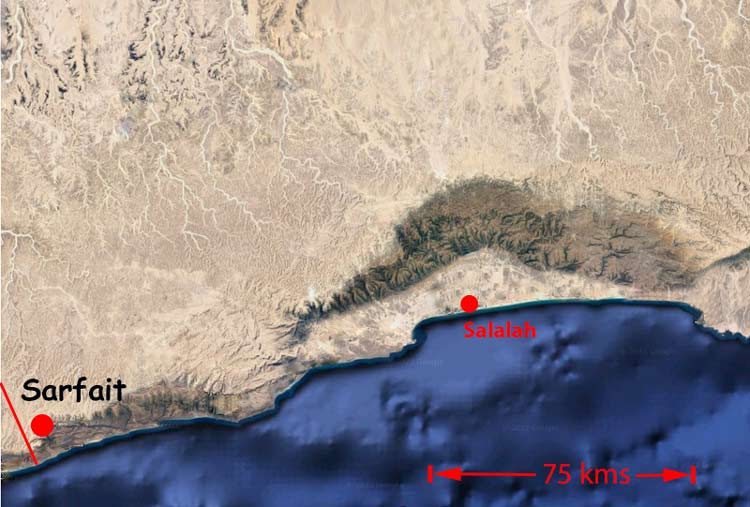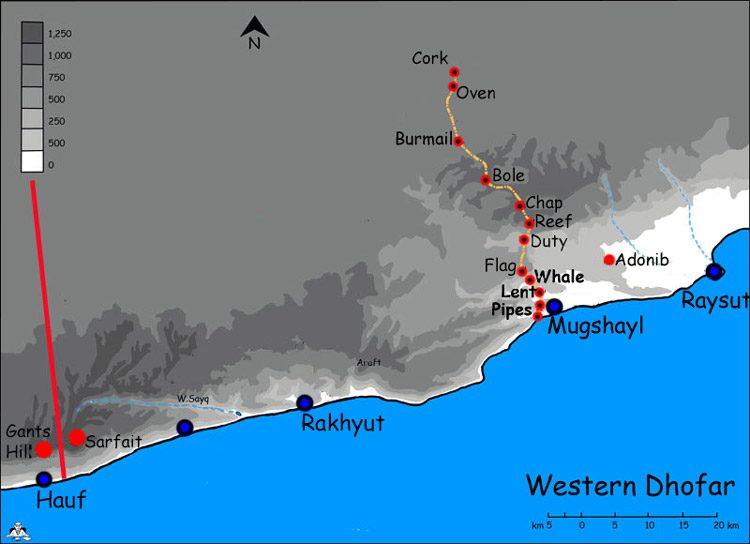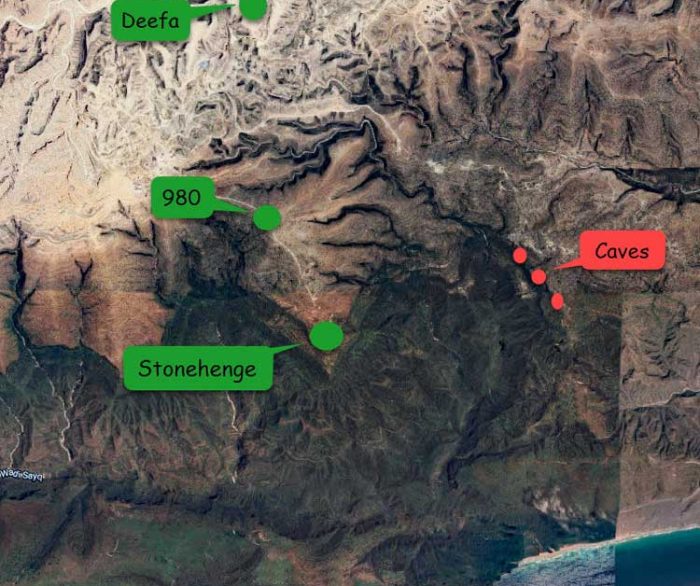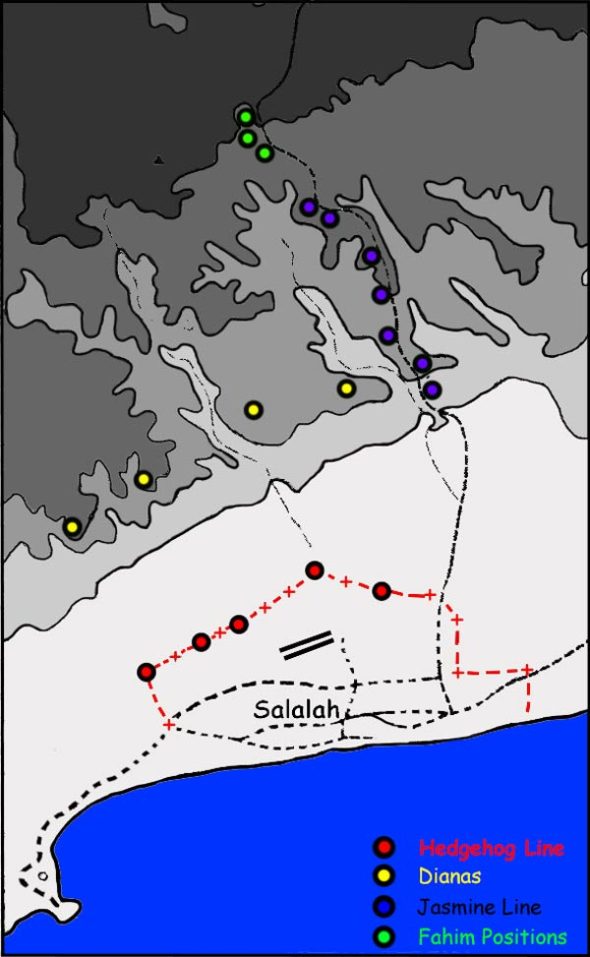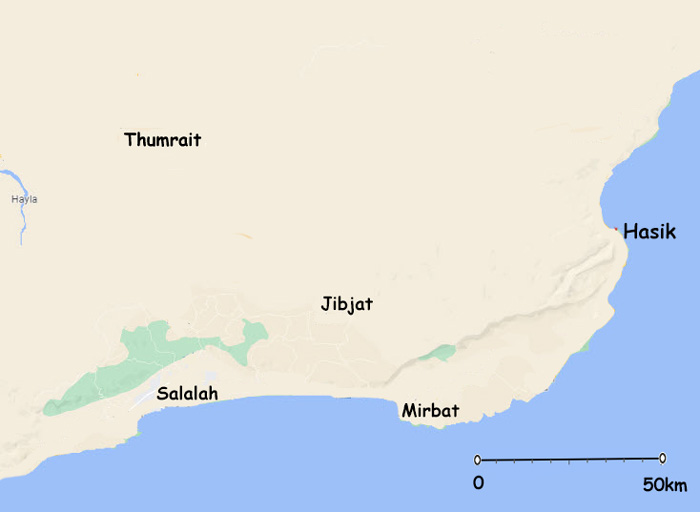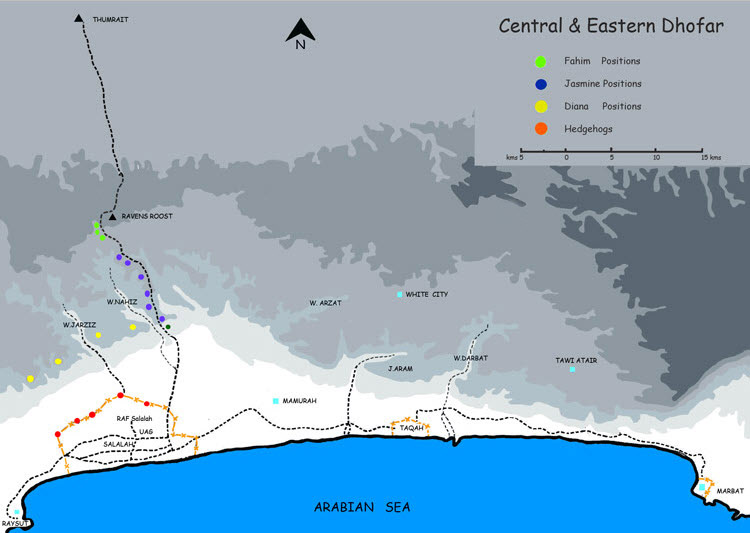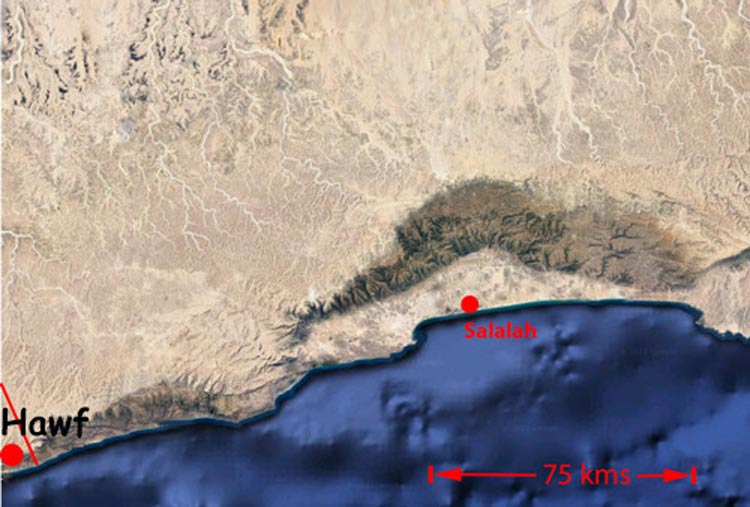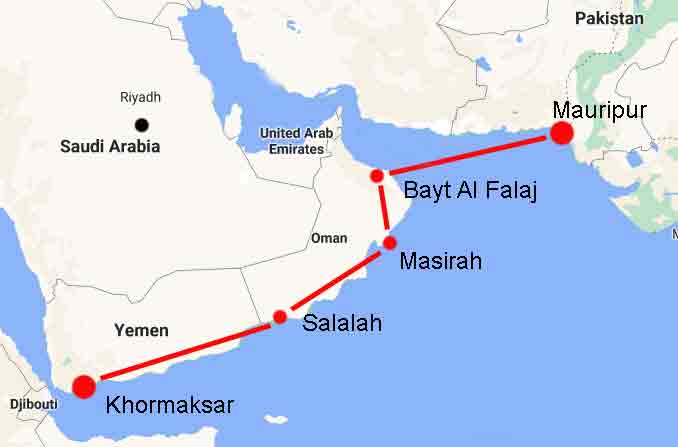
“Adoo” or “Dissident Dhofari” medical kit
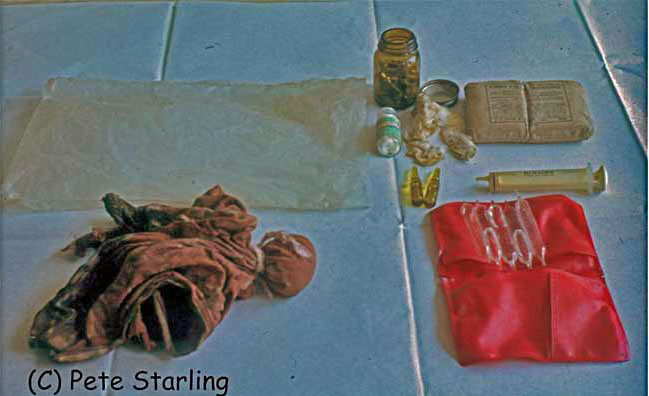
1. Cloth containing a small amount of tea(?)
2. Clear polythene bag
3. Small bottle of capsules
4. Vial very similar to that which might contain penicillin
5. Two ampoules
6. Some grubby cotton wool
7. First Field dressing of British origin
8. Unsterile syringe manufactured in Lebanon
9. Unlabelled ampoules
This dissident Dhofari medical kit came into the possession of the FST in the spring of 1972. Fred Halliday in “Arabia without Sultans” wrote that the PLA made medicines with gum from trees. He makes no other reference that any other medical treatment was available to the rebels. I have read that there was someone with the rebels on the jebel who was capable of surgery as major as amputations. This has not been corroborated from other sources.
The rebel Dhofari medical kit in the photograph is unlikely to be one that was carried by all the rebels as a standard personal medical kit. It is much more likely that is was issued to a medic who was regarded within his group as being a specialist or had been trained to administer first aid.
The provision of this quantity and quality of materials to treat wounded is hopelessly inadequate. Whomsoever was responsible for its issue clearly only intended it as a morale booster and had a callous disregard for the welfare of any of his fellows who were injured.
A number of rebels who were unfortunate enough to have significant injures had the good fortune to end up in and be treated by the FSTs. Any others who were injured and were treated by their “company medic” with his inadequate medical kit are not likely to have survived. The morale of their fellows must have been sorely tried as they witnessed the suffering they underwent.
It was rebel policy to remove their wounded from the battlefield and also to recover their dead. There is an interesting comment in the account given by Peter Isaacs when I questioned him about rebel medical provision.
“Most of the healing was done by a locally well-known traditional doctor who knew all the traditional cures and ‘even carried out amputations’. He is apparently still alive, but down in Dhofar – a marvellous source for deeper research ” “There were one or two medical personnel who came via PDRY, mainly trained medical orderlies rather than doctors, touring the jebel as needed and spending around two or three months at a time, no doubt with limited resources. Some were Yemenis, others Chinese and also one Palestinian.” – As related by Peter Isaacs
“As far as I know the rebels did not have much medical care and, whatever they had, it must have been very primitive. I know a friend who lived on the other side and went to the Rebel School in Hauf (South Yemen). ” – As related to David Insall by a former insurgent (08/06/05)
“C***** has passed on to me a copy of the correspondence you have been having regarding dissident medical kit. I served in the SAS in Dhofar from 1971 to 1974, and with *****
On several occasions I came across large caches of medical equipment, but nothing to indicate the ability to carry out major surgery. Following up after contacts, we would find evidence that first aid had been carried out on the wounded. In 1973 I took part in an operation to attack an adoo village on the jebel near Jib Jat, on the assumption that the dissidents would fight hard to protect their base area, and that, therefore, we would be in a good position to inflict casualties. As it turned out, the base was an ordinary village and happened to contain several wounded rebels; there was no sign of anyone there with any particular expertise in medical care which might have suggested that it was used for any more sophisticated medical treatment.” – e-mail to the webmaster from a former member of BATT (03/06/09)
At a recent meeting former members of BATT related that there was strong evidence of Cuban medical help and of East German Medical help. The Cubans with their cigars and large moustaches had caused quite considerable comment.
At the same meeting one BATT member said that one of his abiding memories following the Battle at Marbat was looking into the operating theatre in Salalah and seeing one of the OTTs taking buckets of water to sluice the blood off the operating table.
General Jeapes in his book “SAS Secret War” describes how the dissidents reviewed their capabilities and decided that they needed to improve the medical aid that they gave to the locals much in line with that given by BATT and CAT. He comments that if their wounded could not reach Hauf, often an incredibly hard journey on foot, they would probably die. A female Lebanese doctor looked after the less badly wounded in a cave at Shershitti whilst her husband worked in Hauf itself. He does suggest that some were evacuated to Aden by boom.
Dissident Casualty Evacuation.
The airhead at al-Ghaydah was used by the Front for the evacuation of casualties. It is about 60 miles to the west of Hawf. The Front had a hospital at Hawf which received them and did what was necessary before some of those injured who needed more sophisticated care were driven down to the airhead and flown to Aden.
Al Ghaydah to Aden 860 kms by air and 1266 kms by road
Cuban medical aid was given by a team of six doctors who established the Martyr Fatima Ghanana Hospital in July ’74. The Cubans operated just outside Dhofar on the PDRY border. They continued to provide essential treatment after the end of the war.
“By August 1969, the western sector of Dhofar had been liberated. Socially the PFLOAG began to break down the tribal structure, abolish slavery, eradicate illiteracy, provide medical care by establishing the Martyr Habkook Hospital as well as military health units and complete rights and equal status for women. On the political level, the PFLOAG fought to deepen national unity by establishing a broad united front to intensify the struggle against the imperialists. To date more than 90% of Dhofar has been liberated. “
This comment comes from the Vietnam Veterans against War Website
